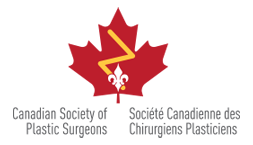Understanding Facelift Surgery
There are few procedures as closely associated with cosmetic surgery as the facelift. Despite this popularity, there remain many misconceptions about facelift surgery, and the purpose of this reference is to explain facelift surgery, and help you to decide if this is a worthwhile procedure for you.
WHAT IS A FACELIFT
A facelift is an operation which is performed to create a more youthful appearance. Facial ageing features loss of volume in the upper face and sagging in the lower face as well as skin changes such as wrinkles and abnormal pigmentation. Facelift procedures are effective at correcting sagging in the lower face, and addressing some of the skin wrinkles that occur in this process. Maneuvers, including a mid-facelift or fat grafting, are used to restore volume and youthful curves to the upper portion of the face. Treatments directed at skin ageing, including chemical, peels, and laser can be used either in combination with the facelift or as a separate procedure.
SIGNS OF AGEING AND CANDIDATES FOR FACELIFT
Facial ageing can occur at different ages in different people. Often the earliest signs are a sagging in the neck and jowl area associated with the wrinkles in the cheeks. There is also a loss of upper facial volume, particularly in the upper cheek area. The decision of when to proceed with a facelift often hinges on two conflicting Issues. Some patients seek to grow old gracefully, and for them, earlier surgery should be considered so as to avoid an abrupt change in appearance. Delaying facelift surgery into your 60s or 70s is more likely to result in a more dramatic effect which may be appealing to some people, but other patients would find the attention this attracts to be disagreeable. The ideal candidate for facelift surgery is healthy without vascular disease. A history of smoking is often the greatest concern as it predisposes to bleeding and ischemic complications. Facelift surgery addresses the neck, jowl, and neck area. It is often necessary to combine these procedures with eyelid surgery, or brow lift surgery to maintain a harmonious appearance.
PREPARING FOR A FACELIFT
Your consultation is the most important step towards preparing for a facelift. You should have a good understanding of your past medical history, including any prior surgery and medications that you take. Do some research to find two or three qualified plastic surgeons who are ideally within an hour’s drive of your home. Travelling distances for surgery puts you in peril if there are any aspects of your healing that are not typical. Your consultation should include a careful discussion of the risks and limits of surgery. The site of intended incisions, and subsequent scarring will be discussed, as well as the need for any additional procedures to maintain a harmonious appearance. Your surgeon may recommend reviewing your chart with the anesthetist or sending you for medical assessments to confirm that you would be safe for your surgery. The option of sedation versus general anesthetic will be a consideration. The need to stop smoking will be a consideration for some. Weight loss after facelift surgery can accelerate the appearance of facial ageing, and thus careful consideration of your weight stability is important. It is not uncommon for patients who are addressing significant life changes, such as divorce to consider facelift surgery. This is not an absolute contraindication, but it must be considered that facial cosmetic surgery can be stressful and indeed there is a roller coaster ride in terms of your appearance and associated emotions and so this must be anticipated before surgery.
THE FACELIFT PROCEDURE
Facelift surgery may be performed under sedation or general anesthetic. Sedation has the advantage of less risk of bleeding immediately after surgery as blood pressure is more stable after sedation. On the other hand, general aesthetic has the advantage that you’ll be comfortable throughout your procedure, and then will be less reliant on local anesthetic to allow for pain-free surgery. Local anesthetic can distort tissues and create swelling, which may limit the artistry of your surgeon. Skin incisions may vary and it is important that your plastic surgeon explains by way of a drawing the specifics of where your incisions will be. Particularly when there’s loose skin in the neck an incision along the hairline behind the ear may become necessary. There are multiple techniques that can be used during surgery. The SMAS lift involves using the fibrous membrane beneath the skin to achieve some of the repositioning and maintaining the tension of the facelift. This technique allows the surgeon great flexibility such that specific effects in the neck, cheek, and jowl can be achieved, depending on how the SMAS layer is manipulated. Fat grafting has become a powerful tool for adding volume, particularly in the middle and upper face. Some surgeons will advocate a deep plane facelift. This introduces greater risks to the nerve supply of the face and in comparison with more superficial techniques, advantages have not been demonstrated. The mid facelift was popular for a time, however, it carries a potential risk of the eyelid mal-position, and it is rarely the case that a mid-facelift warrants the additional risks.
RECOVERY AND POSTOPERATIVE CARE
The primary concern following surgery is the potential for bleeding underneath the skin termed a hematoma. This can delay the recovery to a normal appearance, but if not managed effectively, can also risk skin injury with blistering and even skin death occurring. Your surgeon will explain ways of decreasing the risk of bleeding after surgery. A routine is to ask that you avoid activities that make your face red for 10 days after surgery and we will also prescribe medication (tranexamic acid) to discourage bleeding after surgery. Pain is rarely a problem but medication will be prescribed. We leave a dressing on overnight and when you return the next day to the office, your dressing will be removed and wound care will be described. It generally involves applying antibiotic ointment along incision lines, and you may go in the shower within two days. Swelling is controlled by sleeping with the head and torso elevated. Cold compresses and medical supplements do not significantly contribute.
POTENTIAL RISKS AND COMPLICATIONS OF FACELIFT SURGERY
Infection is very rarely a problem. Hematoma, the accumulation of blood under the skin, is more common in smokers and in men. So long as it is recognized early and managed effectively, it should amount to an inconvenience and should not harm your long-term result. All incisions involved some minor nerve injury, and so subtle changes in sensation and scar tenderness are typical after all operations. Risk to the greater auricular nerve behind the ear, or the branches of the facial nerve are a consideration, but highly unusual with the SMAS facelift. If you’ve had previous facial surgery or injury, your risk may be somewhat different. At your consultation your surgeon should discuss any unique medical issues you have that may increase your risk of particular complications, and steps may be taken to mitigate those risks.
ALTERNATIVE TO FACELIFTS
Non-surgical techniques may be used to manage some aspects of facial ageing. Botox is effective in preventing wrinkles in the upper face. Fillers are effective at replacing our volume in the upper cheek. Chemical peels and laser techniques can be used to manage minor facial wrinkling and skin pigmentation problems. Energy-based devices occasionally achieve good results, but all rely on the body‘s response to the injury through the energy source. Some people respond more dramatically, and although some impressive results can be seen, this is the exception more than the rule. The use of threads under the skin to reposition cheeks and brows often has a very temporary effect, and should not be seen as an alternative to facelift or brow lift surgery.
DURATION OF RESULTS AND MAINTENANCE
Facelift surgery turns back the clock, but does not stop the clock. It would be typical for an ambitious individual to undertake a facelift every 10 to 15 years, and facelifts can be designed to allow for this repetition without creating face or hairline distortion. After a facelift a healthy lifestyle, including sun precautions, moisturizer can help to maintain the effects of a facelift.
CONCLUSION
Your facial appearance is an important asset and it is understandable that facelift surgery is an imposing decision for many people. Be sure to consult with an experienced and reputable plastic surgeon. They should be able to explain all options to you. Fees for surgery can range from $10,000-$100,000, but paying excessive fees will only give you more confidence in the surgeon rather than a better result. Some of the happiest patients in our practice have undergone facelift surgery, and if the scars can be hidden well behind hair, or are not a conspicuous concern, the benefits of the surgery are impressive.
1 Comment
-

Posted on Sep 27 2023 By Threadlift Doctor
great to read about the facelift surgery, but the picture you uploaded 🙂
















Leave A Comment